This page is about the network of libraries in the United States. For other libraries, see Presidential Library.
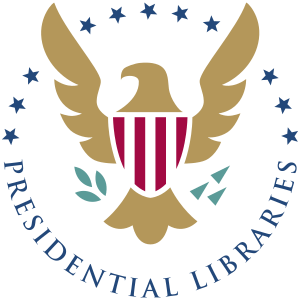
Official seal of the presidential libraries
In the United States, a presidential library is a special place that keeps important papers, records, and items from a former U.S. president. These libraries also have museums with exhibits about the president's life and time in office. They are managed by the National Archives and Records Administration (NARA).
Before the mid-1900s, presidents usually owned their papers. But Franklin D. Roosevelt (the 32nd president) decided to give his papers to the public. He even donated land for his library in Hyde Park, New York. Since then, laws have been made to make sure presidential documents are kept safe for everyone to see.
The newest library is for Barack Obama (the 44th president). It works a bit differently, focusing more on digital records. While NARA keeps the digital archives, a private group runs the physical center for displays.
What Are Presidential Libraries?
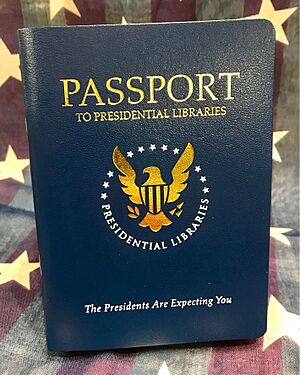
NARA Presidential Libraries Passport
For every president since Herbert Hoover (the 31st president), a special library has been built in their home state. These libraries hold documents, gifts, and museum exhibits about the president's life. They also offer public programs and events.
When a president leaves office, NARA starts collecting and organizing their materials. These are kept safe until a new presidential library is built and given to the government. The very first presidential library was for Franklin D. Roosevelt, opened in 1941. The George W. Bush Presidential Center opened in 2013.
NARA even has a "passport" to encourage people to visit all the presidential libraries. If you visit them all, you get a special crystal paperweight!
Libraries Not Run by NARA
Most presidential libraries for presidents since Herbert Hoover are run by NARA. However, some libraries and museums for earlier presidents are not part of this system. They are managed by private groups, historical societies, or state governments.
For example, the Abraham Lincoln Presidential Library and Museum in Springfield, Illinois, is run by the state of Illinois, not NARA. The Richard Nixon Presidential Library and Museum in Yorba Linda, California, was once privately owned. But in 2007, it officially became part of the NARA system.
Some presidents have their papers kept at universities or historical societies. For instance, Ulysses S. Grant's papers are at Mississippi State University. Plans are also underway for a Theodore Roosevelt Presidential Library in North Dakota and a Warren G. Harding Presidential Center in Ohio.
History of Presidential Libraries
For a long time, presidents thought their official papers were their own private property. Some took their papers home, others even destroyed them. This meant many important historical documents were lost or scattered.
A very early example of a presidential collection was started by Lucretia Rudolph Garfield, the wife of President James A. Garfield. After he was assassinated in 1881, she added a library wing to their home in Mentor, Ohio. This site is now run by the National Park Service.
The National Archives and New Laws
In 1939, President Franklin D. Roosevelt decided to give his papers to the government. He believed these papers were important for the country's history and should be available to everyone. He asked the National Archives to take care of them.
In 1955, Congress passed the Presidential Libraries Act. This law encouraged future presidents to donate their historical materials to the government. It made sure these important papers would be saved and available to the public. Under this law, private groups usually raise money to build the libraries. Once built, they are given to NARA to manage.
Before 1978, presidents still largely owned their papers. But after the Watergate scandal involving President Richard Nixon, Congress passed a law in 1974. This law said that materials from the Nixon White House belonged to the public.
Then, in 1978, the Presidential Records Act was passed. This important law made it clear that all official presidential records belong to the U.S. Government. When a president leaves office, NARA takes custody of these records. This law also allowed presidential libraries to continue as the main place for these records.
Later, in 1986, another law required private groups building new libraries to also raise money for an endowment. This money helps NARA pay for some of the library's maintenance costs.
Today, with more and more records being digital, and with the increased cost of building and maintaining these libraries, NARA believes future presidents might choose different ways to preserve their history. The Barack Obama Presidential Center is an example of this "new model," where the library's materials are fully digital and managed by NARA, but the physical center is run by a private foundation.
What Do Libraries Hold?
The 13 presidential libraries run by NARA hold a huge amount of history! They have over 400 million pages of documents, nearly 10 million photos, and millions of feet of film. They also have almost 100,000 hours of audio and video recordings. Plus, there are about half a million museum objects.
These collections make each library a great place to learn about the presidency. The most important items are the papers created by the president and their staff while in office. Libraries also display many objects, like family items, campaign souvenirs, awards, and gifts given to the president by people and foreign leaders. These gifts can be anything from handmade crafts to valuable artworks.
Libraries also keep personal papers donated by people connected to the president, like Cabinet members or family friends. Many libraries have also recorded interviews with people who knew the president, creating "oral histories." Some collections even include documents from before or after a president's time in office, like Dwight D. Eisenhower's military career papers.
Most presidents since Herbert Hoover are buried at their presidential library. Notable exceptions include John F. Kennedy (buried at Arlington National Cemetery) and Lyndon B. Johnson (buried at his ranch). Jimmy Carter plans to be buried near his home in Plains, Georgia. Gerald Ford is buried at his museum in Grand Rapids, Michigan, while his library is in Ann Arbor, Michigan.
List of Presidential Libraries
This table lists presidential libraries and related sites.
| # |
President |
Library name |
Location |
Operated by |
Image |
Logo/website |
| 1 |
George Washington |
Fred W. Smith National Library for the Study of George Washington at Mount Vernon
Opened September 27, 2013 |
Mount Vernon, Virginia |
Mount Vernon Ladies' Association |
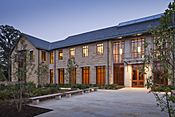 |
website |
| 2 |
John Adams |
Stone Library at Adams National Historical Park
Opened 1870 |
Quincy, Massachusetts |
National Park Service (NPS) |
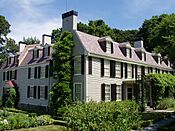 |
website |
| 3 |
Thomas Jefferson |
Robert H. Smith International Center for Jefferson Studies at Monticello
Opened 1994 |
Charlottesville, Virginia |
Thomas Jefferson Foundation |
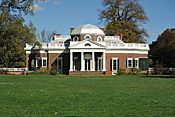 |
website |
| 4 |
James Madison |
The Papers of James Madison at Shannon Library
Opened in 1937, digital April 28, 2010. |
Charlottesville, Virginia |
University of Virginia |
 |
Montpelier |
| 4 |
Montpelier
Opened 1984 |
Montpelier Station, Virginia |
The Montpelier Foundation |
 |
Montpelier |
James Madison Museum
Opened 2013 |
Orange, Virginia |
James Madison Memorial Fellowship Foundation |
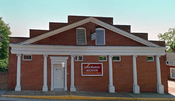 |
museum |
| 5 |
James Monroe |
James Monroe Museum and Memorial Library
Opened 1966 |
Fredericksburg, Virginia |
University of Mary Washington |
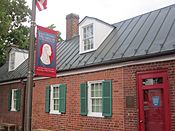 |
website |
| 5 |
Highland
Opened 1931 |
Simeon, Virginia |
College of William and Mary |
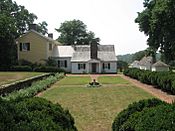 |
website |
| 6 |
John Quincy Adams |
Stone Library at Adams National Historical Park
Opened 1870 |
Quincy, Massachusetts |
NPS |
 |
website |
| 7 |
Andrew Jackson |
The Papers of Andrew Jackson at Hoskins Library
Opened 1987 |
Knoxville, Tennessee |
University of Tennessee at Knoxville |
|
website |
| 7 |
The Hermitage
Opened 1894 |
Nashville, Tennessee |
Andrew Jackson Foundation |
 |
website |
| 8 |
Martin Van Buren |
Martin Van Buren National Historic Site
Opened October 26, 1974 |
Kinderhook, New York |
NPS |
 |
website |
| 9 |
William Henry Harrison |
Berkeley Plantation
Opened 1940s |
Charles City, Virginia |
Berkeley Plantation |
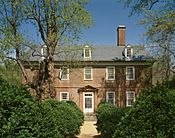 |
website |
| 10 |
John Tyler |
Sherwood Forest Plantation
Opened 1970s |
Charles City, Virginia |
Sherwood Forest Plantation Foundation |
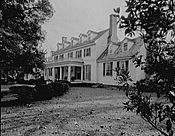 |
website |
| 11 |
James K. Polk |
President James K. Polk Home & Museum
Opened 1929 |
Columbia, Tennessee |
James K. Polk Memorial Association |
 |
website |
| 12 |
Zachary Taylor |
Zachary Taylor National Cemetery
Opened 1928 |
Louisville, Kentucky |
National Cemetery Administration |
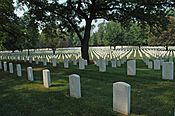 |
website |
| 13 |
Millard Fillmore |
Millard Fillmore House
Opened 1975 |
East Aurora, New York |
Aurora Historical Society |
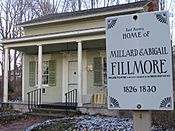 |
website |
| 14 |
Franklin Pierce |
Franklin Pierce Homestead
Opened 1920s |
Hillsborough, New Hampshire |
State of New Hampshire |
 |
website |
| 15 |
James Buchanan |
James Buchanan papers at the Historical Society of Pennsylvania
Transferred c. 1895–1897 |
Philadelphia, Pennsylvania |
Historical Society of Pennsylvania |
 |
website |
| 15 |
Wheatland (James Buchanan House)
Opened 1930s |
Lancaster, Pennsylvania |
James Buchanan Foundation |
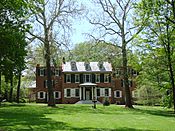 |
website |
| 16 |
Abraham Lincoln |
Abraham Lincoln Presidential Library and Museum
Opened in 2004 |
Springfield, Illinois |
State of Illinois |
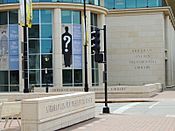 |

website |
| 17 |
Andrew Johnson |
President Andrew Johnson Museum and Library
Opened 1993 |
Tusculum, Tennessee |
Tusculum College |
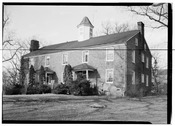 |
website |
| 17 |
Andrew Johnson National Historic Site
Opened 1993 |
Greeneville, Tennessee |
NPS |
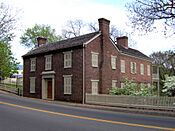 |
website |
| 18 |
Ulysses S. Grant |
Ulysses S. Grant Presidential Library
Opened October 15, 1966 |
Starkville, Mississippi |
Mississippi State University Library
and
Ulysses S. Grant Association |
|
website |
| 18 |
Ulysses S. Grant National Historic Site
Opened 1989 |
Grantwood Village, Missouri |
NPS |
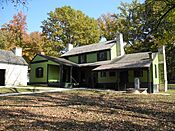 |
website |
| 19 |
Rutherford B. Hayes |
Rutherford B. Hayes Presidential Center
Opened 1916 |
Fremont, Ohio |
Ohio Historical Society
and
Hayes Presidential Center, Inc. |
 |
website |
| 20 |
James A. Garfield |
James A. Garfield National Historic Site
Opened 1998 |
Mentor, Ohio |
NPS
and
Western Reserve Historical Society |
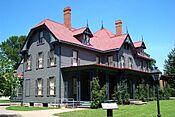 |
website |
| 21 |
Chester A. Arthur |
Chester Alan Arthur State Historic Site
Opened 1950s |
Fairfield, Vermont |
Vermont Agency of Commerce and Community Development |
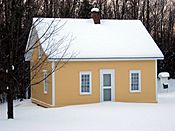 |
website |
| 22 and 24 |
Grover Cleveland |
Grover Cleveland Birthplace
Opened March 18, 1913 |
Caldwell, New Jersey |
New Jersey Division of Parks and Forestry and Grover Cleveland Birthplace Memorial Association |
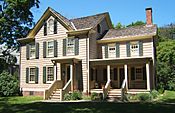 |
website |
| 22 and 24 |
Seeley G. Mudd Manuscript Library
Opened October 16, 1976 |
Princeton, New Jersey |
Princeton University |
 |
website |
| 23 |
Benjamin Harrison |
Benjamin Harrison Presidential Site
Opened 1970s |
Indianapolis, Indiana |
Arthur Jordan Foundation |
 |
website |
| 25 |
William McKinley |
William McKinley Presidential Library and Museum
Memorial/Gravesite opened September 1907 |
Canton, Ohio |
Stark County Historical Society |
 |
website |
| 26 |
Theodore Roosevelt |
Theodore Roosevelt Presidential Library |
Medora, North Dakota in planning |
Theodore Roosevelt Presidential Library Foundation |
|
website |
| 26 |
Houghton Library
Collection donated in 1943 |
Cambridge, Massachusetts |
Harvard University |
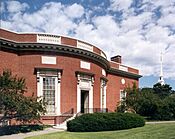 |
website |
| 26 |
The Theodore Roosevelt Center at Dickinson State University
Launched in 2009 |
Dickinson, ND |
Dickinson State University |
|
website |
| 26 |
Theodore Roosevelt Birthplace National Historic Site
Opened 1923 |
Manhattan, New York City, New York |
NPS |
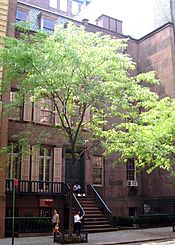 |
website |
| 27 |
William Howard Taft |
William Howard Taft National Historic Site
Opened 1970s |
Cincinnati, Ohio |
NPS |
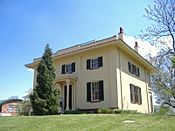 |
website |
| 28 |
Woodrow Wilson |
Woodrow Wilson Presidential Library
Opened in 1990 |
Staunton, Virginia |
Woodrow Wilson Presidential Library Foundation |
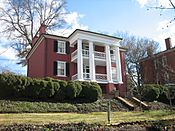 |
website |
| 28 |
Woodrow Wilson Center
Chartered by Congress in 1968 |
Washington, DC |
Woodrow Wilson Presidential Library Foundation |
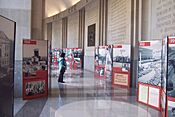 |
website |
| 28 |
Seeley G. Mudd Manuscript Library
Opened October 16, 1976 |
Princeton, New Jersey |
Princeton University |
 |
website |
| 29 |
Warren G. Harding |
Warren G. Harding Home & Memorial
Opened in February 1926 |
Marion, Ohio |
Ohio History Connection |
 |
website |
| 29 |
Warren G. Harding Presidential Center
Opened on May 12, 2021 |
Ohio History Connection |
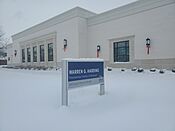 |
website |
| 30 |
Calvin Coolidge |
Calvin Coolidge Presidential Library and Museum
Opened in 1956 |
Northampton, Massachusetts |
Forbes Library |
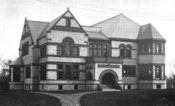 |
website |
| 30 |
President Calvin Coolidge State Historical Site
Opened in 1957 |
Plymouth Notch, Vermont |
State of Vermont |
 |
website |
| 31 |
Herbert Hoover |
Herbert Hoover Presidential Library and Museum
Dedicated August 10, 1962 |
West Branch, Iowa |
National Archives and Records Administration (NARA) |
 |

website |
| 32 |
Franklin D. Roosevelt |
Franklin D. Roosevelt Presidential Library and Museum
Dedicated June 30, 1941 |
Hyde Park, New York |
NARA |
 |

website |
| 33 |
Harry S. Truman |
Harry S. Truman Presidential Library and Museum
Dedicated on July 6, 1957 |
Independence, Missouri |
NARA |
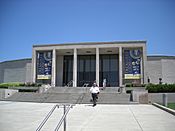 |

website |
| 34 |
Dwight D. Eisenhower |
Dwight D. Eisenhower Presidential Library, Museum and Boyhood Home
Dedicated on May 1, 1962 |
Abilene, Kansas |
NARA |
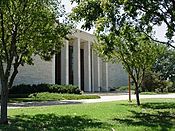 |

website |
| 35 |
John F. Kennedy |
John F. Kennedy Presidential Library and Museum
Dedicated on October 20, 1979 |
Boston, Massachusetts |
NARA |
 |

website |
| 36 |
Lyndon B. Johnson |
Lyndon Baines Johnson Library and Museum
Dedicated on May 22, 1971 |
Austin, Texas |
NARA
and
The University of Texas at Austin |
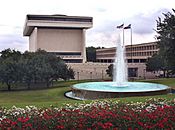 |

website |
| 37 |
Richard Nixon |
Richard Nixon Presidential Library and Museum
Dedicated on July 19, 1990 |
Yorba Linda, California |
NARA and
Richard Nixon Foundation |
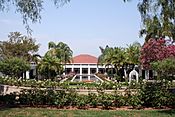 |

website |
| 38 |
Gerald Ford |
Gerald R. Ford Presidential Museum
Dedicated on September 18, 1981 |
Grand Rapids, Michigan |
NARA |
 |

website |
Gerald R. Ford Presidential Library
Dedicated on April 27, 1981 |
Ann Arbor, Michigan |
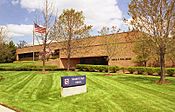 |
| 39 |
Jimmy Carter |
Jimmy Carter Library and Museum
Dedicated on October 1, 1986 |
Atlanta, Georgia |
NARA |
 |

website |
| 40 |
Ronald Reagan |
Ronald Reagan Presidential Library
Dedicated on November 4, 1991 |
Simi Valley, California |
NARA |
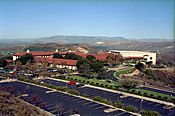 |

website |
| 41 |
George H. W. Bush |
George H.W. Bush Presidential Library and Museum
Dedicated on November 6, 1997 |
College Station, Texas |
NARA
and
Texas A&M University |
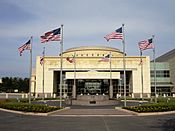 |

website |
| 42 |
Bill Clinton |
William J. Clinton Presidential Center and Park
Dedicated on November 18, 2004 |
Little Rock, Arkansas |
NARA |
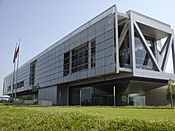 |

website |
| 43 |
George W. Bush |
George W. Bush Presidential Center
Dedicated on April 25, 2013 |
Dallas, Texas |
NARA
and
Southern Methodist University |
 |

website |
| 44 |
Barack Obama |
Barack Obama Presidential Library |
Digital, NARA facilities |
NARA |
|
website |
| 44 |
Barack Obama Presidential Center
Scheduled to open in the mid 2020s |
Chicago, Illinois |
Obama Foundation and the University of Chicago |
|

website |
| 45 |
Donald Trump |
Donald J. Trump Presidential Library |
in planning |
NARA |
|

website |
| 45 |
Donald J. Trump Presidential Center
in planning, no location or opening scheduled so far. |
under consideration |
not decided |
|
|
| 46 |
Joe Biden |
Joe Biden Presidential Center |
TBA |
|
|
Other Presidential Collections
Even for presidents who don't have a NARA library, their papers are often kept in other important places. For example, the papers of Grover Cleveland and Woodrow Wilson are at Princeton University. Theodore Roosevelt's papers are at Harvard University.
James Buchanan's papers are at the Historical Society of Pennsylvania. Projects are also underway to collect and digitize the papers of presidents like Andrew Jackson and Martin Van Buren.
Many presidents, especially those from before the NARA system, have their collections spread across different private and public archives. For example, before the Barack Obama Presidential Center is fully ready, his papers are stored in a facility in Hoffman Estates, Illinois. You can access them through the Freedom of Information Act.
See also





























































